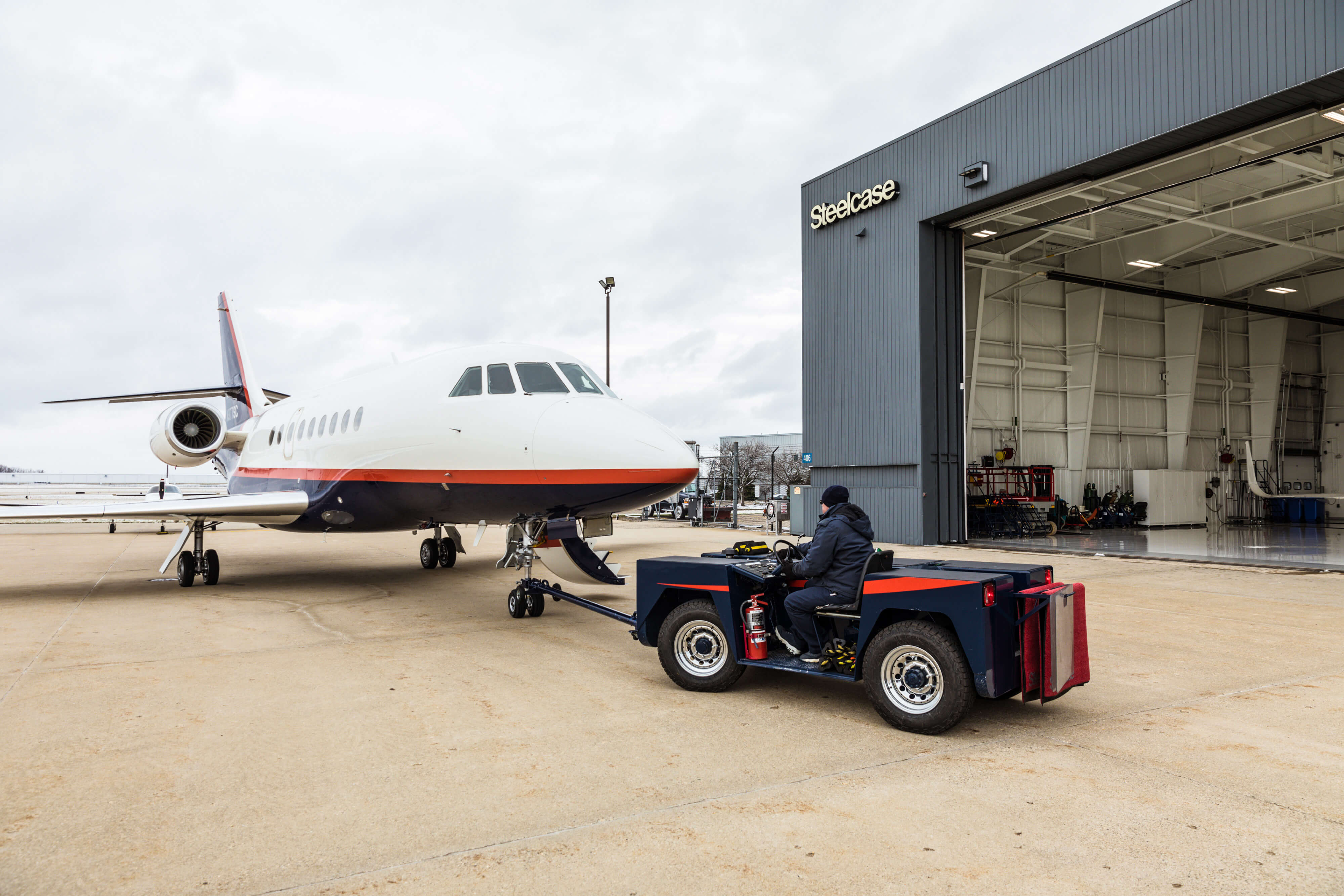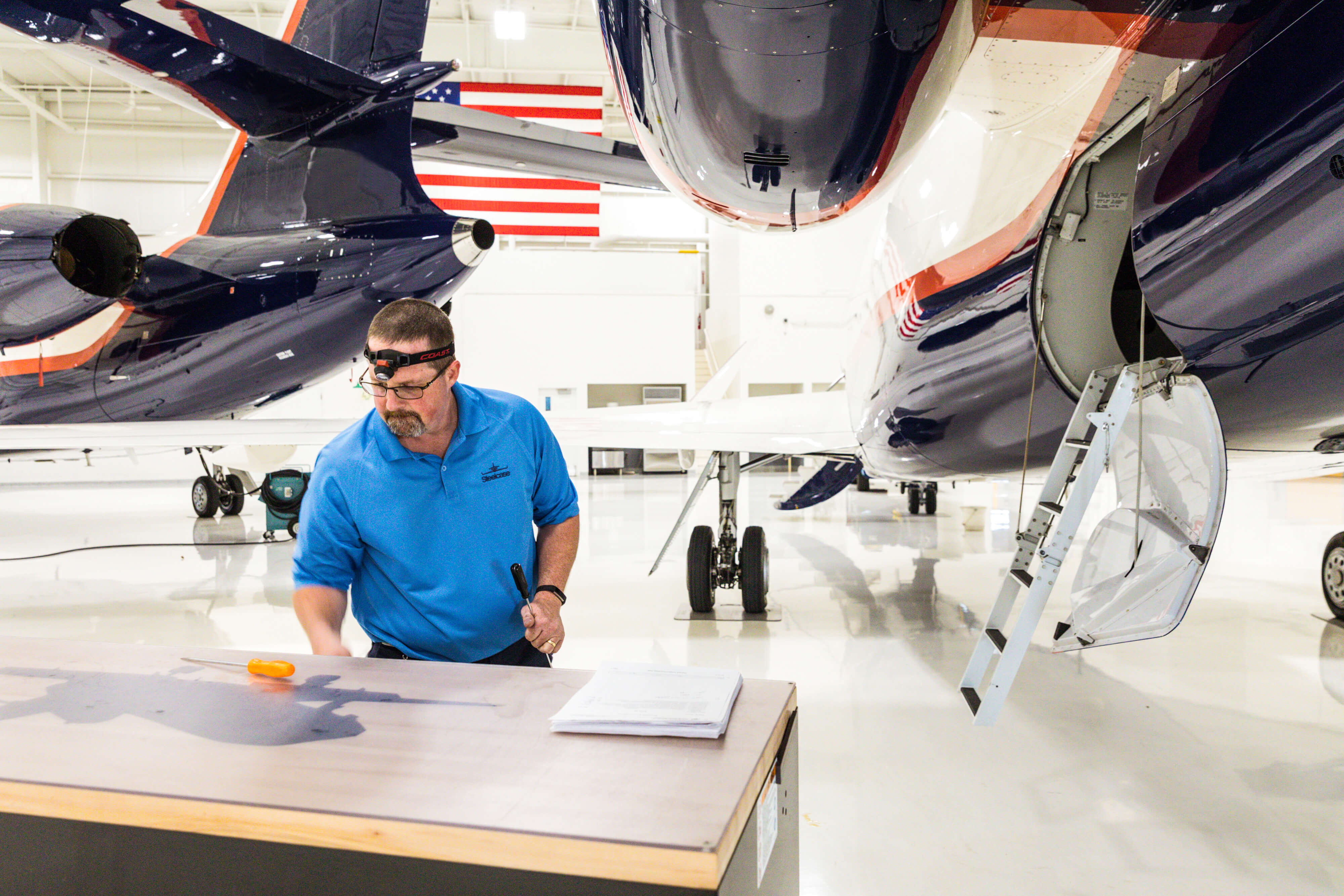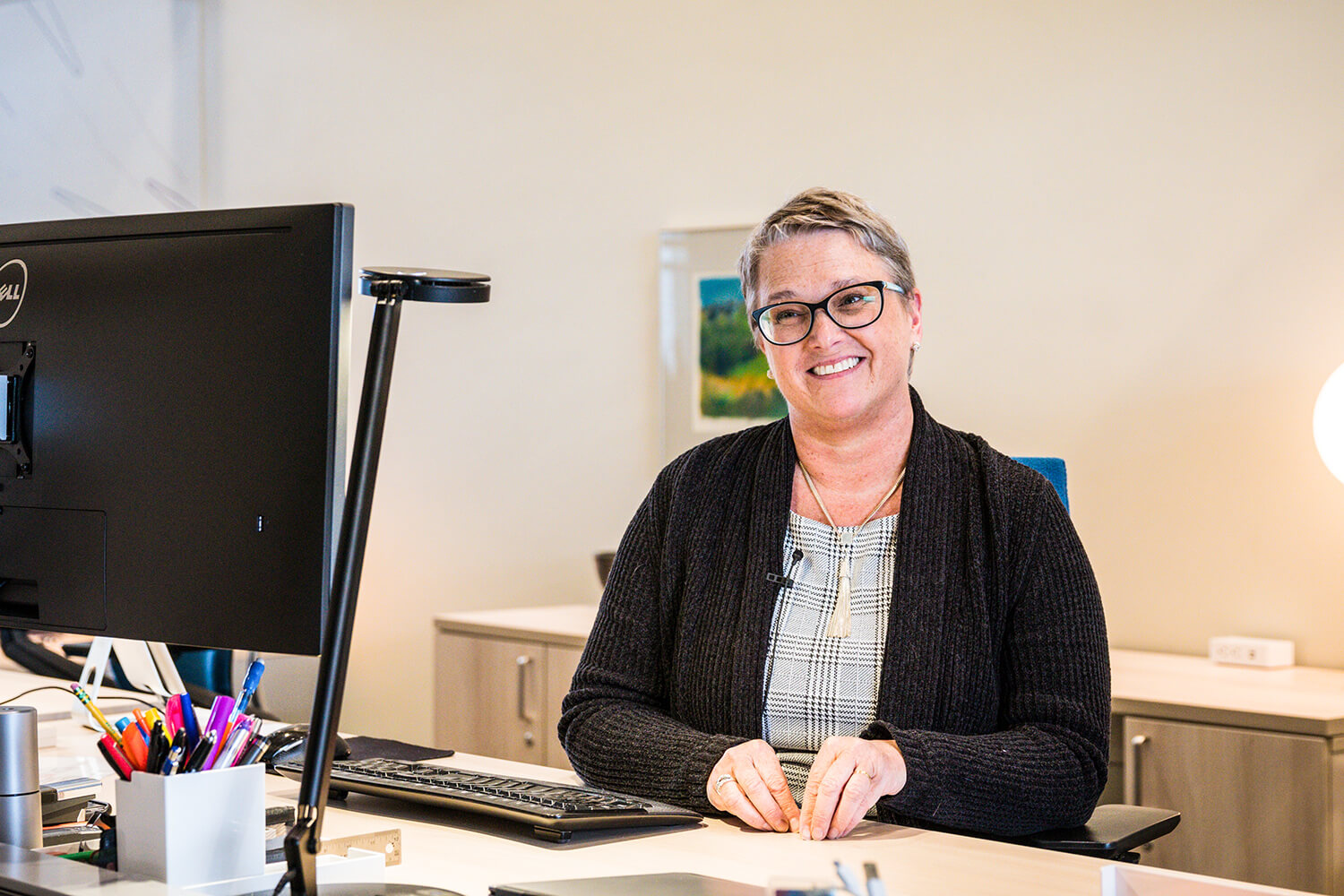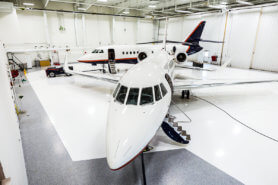
Steelcase Aviation welcomes customers to the office furniture maker’s innovation hub.
Sept. 30, 2019
At first glance, Steelcase Aviation’s base at Michigan’s Gerald R. Ford International Airport in Grand Rapids is a typical – though sparkling clean – business aircraft hangar. Look closer and you will see it doubles as a showroom for Steelcase office furniture.
“The hangar is a showpiece,” said John McAlindon, director of aviation. “We treat it like that because our flying is primarily for bringing customers to Grand Rapids so they can learn more about Steelcase as a company, and how our ideas and research can help them work at their full potential.”
The world’s largest office-furniture manufacturer, Steelcase has been in Grand Rapids since its founding in 1912. While the company has 80 locations worldwide, nearly 95 percent of its flying is devoted to bringing customers to its facilities in Grand Rapids. Two Dassault Falcon 2000s – an LX and an LXS – fly a total of over 1,500 hours a year.
“Compared to other flight departments, little of our mission is flying employees,” said McAlindon. “As an aviation team, we are ambassadors: the first faces customers see on their trip to Grand Rapids, and the last faces they see when they fly home.”

Steelcase Aviation flies 300 customer groups to Grand Rapids per year. Another 200 groups arrive via the airlines or by car. Steelcase pilots wear suits and ties and roll out a red carpet for their guests, who are then trans-ported to meet with specialists at their Global Headquarters and Learning & Innovation Center, as well as any other relevant sites. Instead of a sterile show-room, customers tour the company’s working offices so they can see the latest concepts in practice.
“Steelcase does a lot of research on workers and workplaces, and we test ideas out on ourselves,” said Kathy Farquharson, director of corporate sales. “We want customers to see real employ-ees working here. Our aviation team can bring them here in a day trip.”
Usually, a group of 10 people fly to Grand Rapids on each visit, meaning the Falcons are usually full. Customer deci-sion-makers often travel with Steelcase sales reps from their home region, along with Steelcase dealer representatives, architects, designers and other partners.
A typical visit begins at 8 a.m., when Steelcase pilots pick up a group at their local airport. They usually arrive in Grand Rapids before 10 a.m. After their day of learning, they fly home at 5 p.m. Customers visiting from farther than a two-hour flight might spend the night in Grand Rapids.

Picking up and dropping off customers means Steelcase’s airplanes never wait on the ground. But that schedule also creates the potential for dead-heads, which Supervisor of Aviation Administration Anne-Marie Smith works hard to avoid.
“I’m usually manipulating about 100 different trip requests at any given time,” said Smith. “They all have different dates; they’ll get approved or cancelled or moved up. It’s a dynamic schedule.”
To minimize deadheads, Steelcase schedules trips back-to-back and pre-positions the aircraft overnight. After dropping passengers off at home, that outbound flight crew will fly to the next day’s pickup destination. In the morn-ing, they fly inbound to Grand Rapids with an aircraft full of another group of guests. Once back home, that flight crew will rotate off and a new crew will come on duty for that day’s outbound flight. Most days, both aircraft are flying.
Trip requests are usually initiated by a sales rep, assigned a priority and approved by a regional vice president. In total, Steelcase Aviation flies about 5,000 passengers per year.
“In the scheduling department, we work closely with our Corporate Sales team. We are the bridge between the aviation and business worlds,” said Smith.
Previously, Steelcase sales reps used a proprietary web portal to make trip requests. When Steelcase’s sales team started using Salesforce for customer relationship management, the IT department integrated the trip-request function into Salesforce.
“Now, with Salesforce, the reps can just put the request straight in,” said Smith. “All the information they used to have to fill in manually gets pulled straight from Salesforce – the client relationship, the priority, any catering needs – all the data we need for reporting. It’s a very powerful tool.”

To accommodate maintenance demands, Steelcase tries to schedule one day a week when an airplane is not flying, usually Friday or Monday. The four maintenance technicians perform monthly inspections on various systems as called for by the Optimized Continuous Inspection Program (OCIP).
“OCIP breaks the maintenance into monthly blocks, rather than having a major aircraft inspection come due yearly,” said Andrew Cummins, Steelcase’s maintenance manager. “So, the vast majority of inspections we’re doing in-house. It’s very hands-on, and it gives us a lot of control over our aircraft.”
Under a conventional maintenance schedule, the aircraft would need to go down for more week-long inspections, which would require flying them to a service center.
“That would be downtime when the airplanes couldn’t fly and the schedulers couldn’t schedule customer visits,” said Cummins. “OCIP really aids in the flexibility of our flight schedule.”
Despite the busy flight schedule, the Steelcase Aviation team gathers quarterly for Customer Experience training, as well as safety briefings and reviews. The operation has achieved Stage 3 of the International Standard for Business Aircraft Operations (IS-BAO). The department accomplishes this through a safety management system that brings ad hoc groups together as hazards are reported, instead of having a standing safety committee meeting. Every month or so, someone files an SMS report to document hazards, irregularities, or sim-ply to make a suggestion.
“Once a hazard is reported, I’ll review it with John [McAlindon], and we’ll assign it to a small group,” said Mike Salliotte, Steelcase’s safety captain. “That usually includes somebody from maintenance, flight or scheduling. Then we’ll sign off on a resolution pretty quickly.”
The ad hoc group closes the hazard report in about a week, then the recommended resolution goes to Standards Captain Randy Turke to be written into the standard operating procedures.
“We take our IS-BAO status very seriously,” said Salliotte. “Once everyone buys in, it’s actually seamless. It just becomes how you operate day-to-day.”

THE YEAR OF TURNOVER
Long tenures are part of the culture at Steelcase Aviation. In 2013, four pilots, each who had served with the flight department for more than 30 years, retired within months of each other.
The company and aviation leader-ship saw that retirement cliff coming and prepared for it well in advance. Until 2011, the only management position was director, with no chief pilot.
“Our director at that time, who was one of the pilots retiring, created a chief pilot role that was new to our department,” said John McAlindon, who took that job. “For three years that gave me the opportunity to grow as a leader and to understand all the additional responsibilities of being the director.”
As the retirement cliff got closer, McAlindon hired three new pilots. The new aviators trained with the retiring airmen and were able to build relationships with the maintenance and scheduling staff. This overlap process also enabled the transfer of institutional knowledge to the new team members.
“We moved forward as a cohesive team,” said McAlindon, who became director in 2014. “I give Steelcase a lot of credit for recognizing that [potential] trouble spot and creating a succession process. It was truly seamless.”

SNAPSHOT: STEELCASE
Aircraft:
Two Dassault Falcon 2000s, an LX and LXS
Base:
Headquartered at Gerald R. Ford International Airport (GRR) in Grand Rapids, MI
Personnel:
Eight pilots
(including the director), four maintenance technicians, an aviation coordinator and a supervisor of administration


 International Business Aviation Council Ltd.
International Business Aviation Council Ltd.